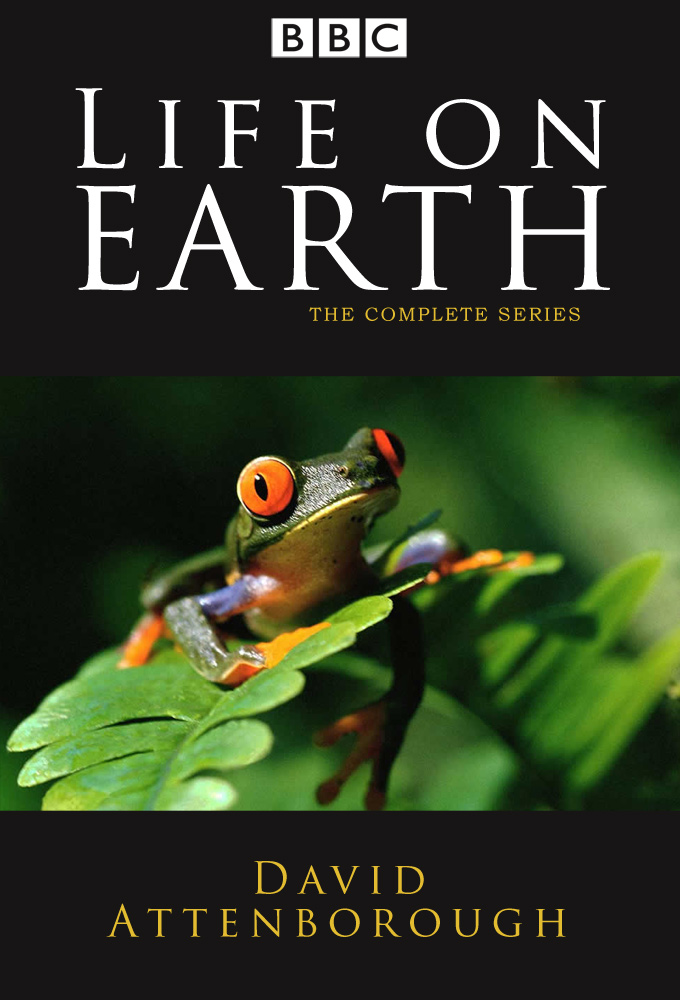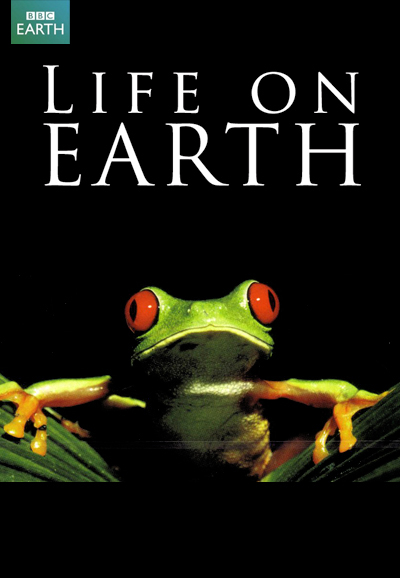
Life on Earth
Non notée
Année : 1979
Nombre de saisons : 1
Durée moyenne d'un épisode : 55 minutes
Genre(s) : Documentaire
Life on Earth (1979) is an epic 13-programme series, presented by David Attenborough, offering a chronological account of the flora and fauna of planet Earth over a period of 3,500 million years. Whether recounting the first journey from the sea to the land, the development of insects and flowers, or "The First Forests" and "The Lords of the Air", Attenborough's enthusiasm is infectious. He guides us through The Infinite Variety of life from microbes to marsupials, via an unforgettable meeting with mountain gorillas, to conclude with The Compulsive Communicators, mankind itself. Three years in the making, involving 1.5 million miles of travel and featuring some of the most beautiful, breathtaking and ambitious photography then seen on television, Life on Earth was the first natural history blockbuster. It redefined TV by showing that an epic, serious wildlife documentary could be a massive success. As such, it remains a true television landmark and paved the way for further entries in what became known as his Life series.
Saisons

Saison 1
4/5
Épisodes
Choisissez votre saison au dessus et découvrez les épisodes qui vous attendent !
Épisode 1 - The Infinite Variety
16 janvier 1979 - 5/5
This episode explores the variety of nature as a whole, from the South American rainforest's to the shores of Australia.
Épisode 2 - Building Bodies
23 janvier 1979 - 5/5
This episode explores the various sea-living invertebrates, form the shores of Morocco to Delaware Bay.
Épisode 3 - The First Forests
30 janvier 1979 - 4/5
Over 400 million years ago, tiny plants began to invade the land, followed by the first animals - the ancestors of scorpions, millipedes and insects
Épisode 4 - The Swarming Hordes
6 février 1979 - 4/5
The role of a few of the millions of insect species, some of which have developed extremely close relationships with plants. Insects pollinate flowers and in some cases neither flower nor insect can survive without the other.
Épisode 5 - Conquest of the Waters
13 février 1979 - 3/5
A look at some of the 30,000 species of fish which exist in populations of billions. They can fly, produce electricity, survive in hot soda lakes or under the Antarctic ice. Some, like the salmon, even migrate across oceans and up waterfalls
Épisode 6 - Invasion of the Land
20 février 1979 - 4/5
Some 350 million years ago, evolution reached one of its most crucial stages when fish crawled from water onto the land and became amphibians. Today, newts, salamanders, toads and frogs still survive in great quantities, and there is even one species of frog where the male gives birth from its mouth!
Épisode 7 - Victors of the Dry Land
27 février 1979 - 3/5
A look at the history of reptiles, the first back-boned creatures to solve the problems of living high and dry on the land. Their waterproofed skin and sealed eggs enabled the mighty reptiles to rule the world
Épisode 8 - Lords of the Air
6 mars 1979 - 3/5
We examine the uses and advantages of birds' unique possession - the feather. Feathers are insulators; they provide the surface of the most perfect aerofoils known - bird's wings; and they play a central role in courtship
Épisode 9 - The Rise of the Mammals
13 mars 1979 - 2/5
A look at the evolution of mammals from reptiles 200 million years ago. This remarkable transition involved the development of mechanisms for regulating body temperature, for allowing the young to develop in the womb and for suckling newborns. Attenborough also explores the South American origins of marsupials and their colonization of Australia
Épisode 10 - Theme and Variations
20 mars 1979 - 3/5
A look at some of the huge variety of mammals. Bats number over a thousand species, many hunt insects, some sip nectar, drink blood, and even catch fish. Contrast those which use sonar with the great whales that sing, the star-nosed mole and the giant anteater, and the potential variations become dramatically clear
Épisode 11 - The Hunters and Hunted
27 mars 1979 - 4/5
Explore the eternal duel between the hunters and the hunted - one of the driving forces of evolution. As the hunters develop speed and cunning, the prey becomes increasingly fast and wary in order to stay alive. Nowhere is this seen better than on the plains of East Africa
Épisode 12 - Life in the Trees
3 avril 1979 - 4/5
David Attenborough's now legendary encounter with young gorillas is featured in this episode as he looks at the history of primates, whose ancestors sought their fortune in the treetops. There they developed binocular vision for accurately judging distances, and the ability to grasp trees with a firm grip. The group includes dazzling gymnasts, deafening choristers and highly cultured monkeys
Épisode 13 - The Compulsive Communicators
10 avril 1979 - 5/5
A look for crucial clues that help to explain how and why we have come to dominate life on Earth. He traces back the African origins of humans to nearly three million years ago, and along the way he goes into caves in Southern France where stone-age people created imaginative paintings of ice-age animals. He also travels to Papua New Guinea to find some hunter-gatherers who have never before set eyes on white people
Vidéos
Sir David Attenborough - The story behind Life on Earth - BBC
03/11/2008

Aucun avis pour le momment...